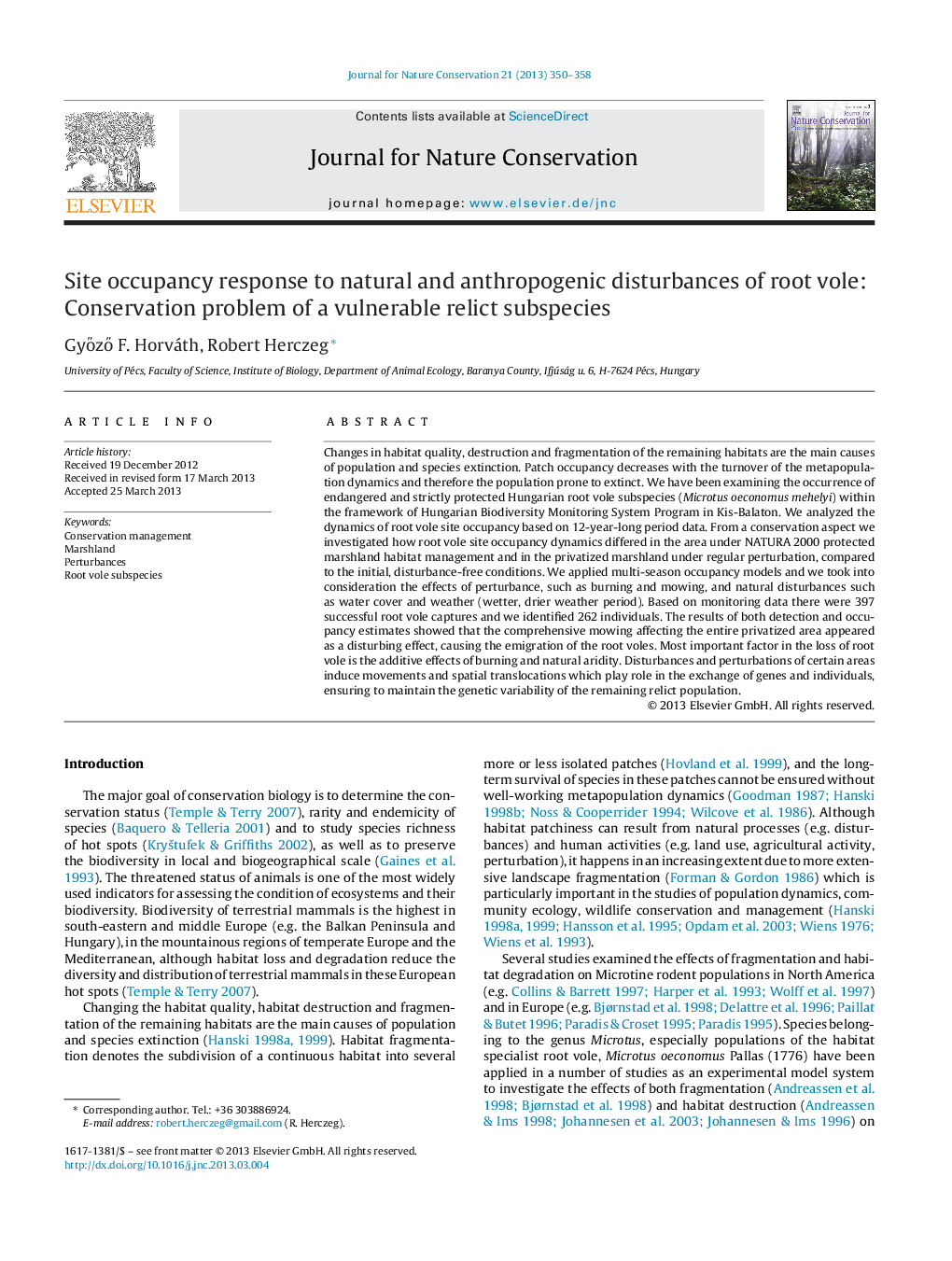| Article ID | Journal | Published Year | Pages | File Type |
|---|---|---|---|---|
| 4399888 | Journal for Nature Conservation | 2013 | 9 Pages |
Changes in habitat quality, destruction and fragmentation of the remaining habitats are the main causes of population and species extinction. Patch occupancy decreases with the turnover of the metapopulation dynamics and therefore the population prone to extinct. We have been examining the occurrence of endangered and strictly protected Hungarian root vole subspecies (Microtus oeconomus mehelyi) within the framework of Hungarian Biodiversity Monitoring System Program in Kis-Balaton. We analyzed the dynamics of root vole site occupancy based on 12-year-long period data. From a conservation aspect we investigated how root vole site occupancy dynamics differed in the area under NATURA 2000 protected marshland habitat management and in the privatized marshland under regular perturbation, compared to the initial, disturbance-free conditions. We applied multi-season occupancy models and we took into consideration the effects of perturbance, such as burning and mowing, and natural disturbances such as water cover and weather (wetter, drier weather period). Based on monitoring data there were 397 successful root vole captures and we identified 262 individuals. The results of both detection and occupancy estimates showed that the comprehensive mowing affecting the entire privatized area appeared as a disturbing effect, causing the emigration of the root voles. Most important factor in the loss of root vole is the additive effects of burning and natural aridity. Disturbances and perturbations of certain areas induce movements and spatial translocations which play role in the exchange of genes and individuals, ensuring to maintain the genetic variability of the remaining relict population.
